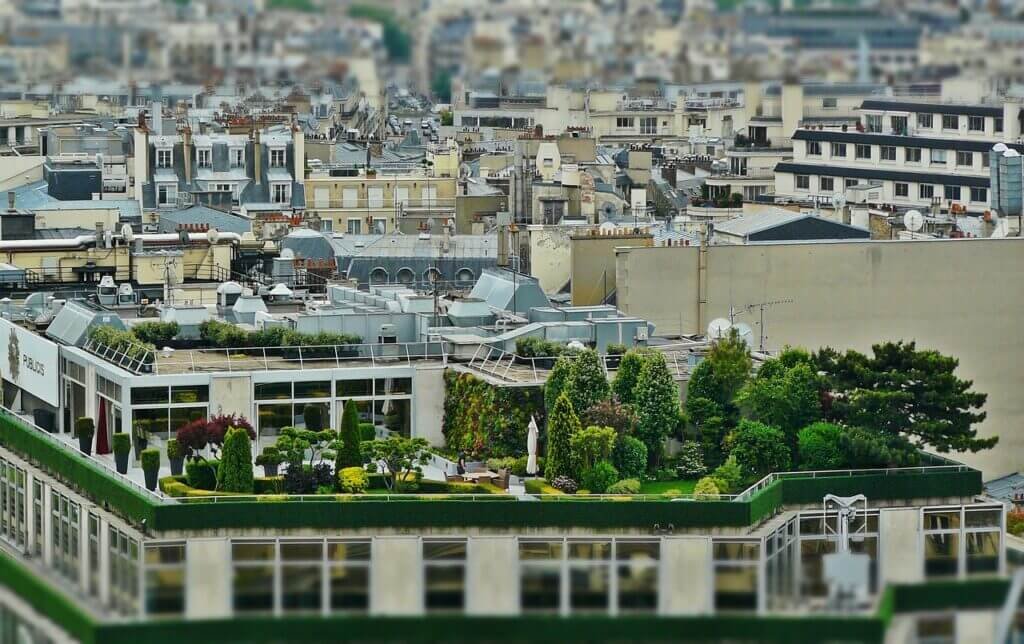Living in a city often means dealing with limited sunlight in your garden, but fear not! With a few clever tips and tricks, you can maximize the potential of your urban oasis. From choosing the right plants to utilizing vertical space, this article will guide you on how to make the most of the limited sunlight available in your city garden. So grab your gardening gloves and let’s transform your outdoor space into a thriving green haven!

Choosing the Right Plants
Consider Shade-Loving Plants
When dealing with limited sunlight in a city garden, it is essential to choose plants that can thrive in shady conditions. Shade-loving plants, also known as shade-tolerant plants, are specifically adapted to lower light levels and will flourish even in areas with minimal sun exposure. These plants often have larger leaves to capture as much light as possible, and they are more resilient to the challenges of limited sunlight. Some popular shade-loving plants include hostas, ferns, begonias, and impatiens.
Opt for Varieties with Low Light Requirements
In addition to shade-loving plants, it is advisable to select specific plant varieties that have low light requirements. These varieties are more adept at photosynthesis and can thrive in areas with diminished sunlight. Look for plants labeled as “low light” or “low maintenance” when shopping for your garden. Plants such as snake plants, ZZ plants, peace lilies, and pothos are excellent choices for city gardens with limited sunlight.
Select Compact and Dwarf Plants
Another strategy to maximize limited sunlight in your city garden is to choose compact and dwarf plant varieties. These types of plants are smaller in stature and require less sunlight to grow and flourish. Compact and dwarf plants are an ideal choice for small city gardens where space is limited. These plants not only maximize the available sunlight but also provide a visually appealing and well-manicured garden. Consider options like compact roses, dwarf conifers, miniature roses, and cherry tomatoes specifically bred for small spaces.
Maximizing Sunlight Exposure
Assess the Sun Patterns in Your Garden
To make the most of limited sunlight, it is crucial to understand the sun patterns in your city garden. Spend some time observing how the sunlight moves across your garden throughout the day. Note where the shadows fall and which areas receive the most direct sunlight. This assessment will help you determine the best placement for your sun-loving plants and any potential barriers to sunlight.
Trim Overhanging Trees and Shrubs
If you have overhanging trees or shrubs in your city garden, they may be blocking a significant amount of sunlight. It is advisable to trim these trees and shrubs to allow more light to reach the plants below. Be sure to consult a professional arborist or gardener to ensure proper trimming techniques and avoid damaging the plants or compromising the structural integrity of the tree or shrub.
Use Reflective Surfaces
Another effective way to maximize sunlight in a city garden is to employ the use of reflective surfaces. These surfaces bounce sunlight back onto your plants, increasing the amount of light they receive. Place mirrors strategically in your garden to reflect sunlight into shady areas. Additionally, consider using white or light-colored surfaces, such as painted walls or fences, to optimize the reflection of sunlight. By making use of reflective surfaces, you can effectively extend the reach of limited sunlight in your garden.

Creating Vertical Gardens
Utilize Vertical Planters
When space is limited, vertical planters offer a practical solution for gardening in a city environment. These planters allow you to maximize the available space by growing plants vertically instead of horizontally. By going vertical, you can optimize sunlight exposure since plants positioned higher up will receive more light. Use trellises, wall-mounted planters, or stackable containers to create a lush and vertical garden.
Install Climbing Structures
Incorporating climbing structures in your city garden can provide additional vertical growth opportunities for your plants. These structures can be as simple as a lattice or as elaborate as a custom-built pergola. When plants are given a structure to climb, they can naturally extend upward, making the most of limited sunlight. Vertical growth not only promotes better light absorption but also creates a visually stunning garden feature.
Hang Baskets and Planters
Hanging baskets and planters are another effective way to utilize vertical space in a city garden. By suspending these containers from walls, fences, or pergolas, you can add more plants to your garden without sacrificing space. Hanging baskets and planters should be strategically positioned to receive as much sunlight as possible. Consider hanging them in areas where direct sunlight reaches for most of the day, ensuring their proper growth and development.
Optimizing Soil Quality
Amend the Soil with Organic Matter
To make the most of limited sunlight, it is crucial to optimize the quality of your soil. One way to achieve this is by amending the soil with organic matter. Organic matter, such as compost or well-rotted manure, improves soil structure, aeration, and nutrient content. It also helps the soil retain moisture, which can be particularly beneficial in city gardens with limited sunlight. Work the organic matter into the top few inches of soil to provide a nutrient-rich environment for your plants.
Monitor and Adjust Soil Moisture
Proper soil moisture is vital for the health and growth of plants, especially in city gardens with limited sunlight. Regularly monitor the moisture level in your garden and adjust accordingly. Avoid overwatering, as this can lead to waterlogged roots and plant stress. Similarly, ensure that the soil does not dry out completely, as this can result in stunted growth and increased susceptibility to pests and diseases. Maintaining optimal soil moisture levels will help your plants make the most of the available sunlight.
Use Mulch to Retain Moisture
Mulching is an effective technique to retain moisture in the soil and improve the overall growing conditions of your city garden. Apply a layer of organic mulch, such as wood chips or straw, around your plants. Mulch helps regulate soil temperature, reduce evaporation, and suppress weed growth. By conserving moisture, mulch enables your plants to maximize water uptake, enhance nutrient absorption, and thrive in conditions of limited sunlight.

Utilizing Containers and Raised Beds
Choose Containers with Adequate Drainage
In a city garden with limited sunlight, utilizing containers can help you make the most of the available space. When selecting containers, ensure they have adequate drainage holes to prevent waterlogging. Excess water can be detrimental to plants and hinder their ability to absorb necessary nutrients from the soil. Containers with good drainage also help prevent root rot and improve overall plant health.
Consider Self-Watering Containers
Self-watering containers are an excellent option for city gardens with limited sunlight. These containers have built-in reservoirs that provide a constant supply of water to the plants. The self-watering system ensures plants receive consistent moisture levels, eliminating the risk of underwatering or overwatering. By reducing the workload of manual watering, self-watering containers enable gardeners to focus on maximizing the available sunlight.
Build Raised Beds for Improved Drainage
Raised beds offer an efficient way to optimize growing conditions in a city garden with limited sunlight. Build raised beds by creating a border and filling them with well-draining soil. The elevated structure allows for better drainage, preventing water accumulation and root rot. Raised beds also provide a deeper soil profile, allowing plants to establish stronger root systems. By building raised beds, you can create an ideal environment for your plants to thrive despite limited sunlight.
Providing Artificial Light
Install Outdoor Lighting
To supplement the limited sunlight in your city garden, consider installing outdoor lighting. Strategically placed lights can extend the hours of daylight, allowing your plants to receive the necessary amount of light for optimal growth. Choose lighting fixtures that emit a full spectrum of light, similar to natural sunlight, to provide the best conditions for your plants. Outdoor lighting also enhances the ambiance of your garden during evening hours.
Use LED Grow Lights
LED grow lights have revolutionized indoor gardening and can be utilized in a city garden with limited sunlight. These lights emit specific wavelengths of light that are ideal for plant growth. LED grow lights are energy-efficient and can be customized to provide the right intensity and duration of light for each plant’s needs. By incorporating LED grow lights, you can supplement the available sunlight and ensure your plants receive ample light for healthy growth.
Set Up Timers for Consistent Lighting
Consistency is key when providing artificial light to plants in a city garden. To maintain a regular light schedule, consider setting up timers for your outdoor lighting or LED grow lights. Timers allow you to control the duration and timing of the light, ensuring that plants receive a consistent supply of artificial light. This regularity mimics natural daylight patterns and helps plants adjust to the available sunlight more effectively.
Utilizing Mirrors and Reflective Surfaces
Strategically Place Mirrors for Light Reflection
Mirrors can be an excellent tool to maximize sunlight in a city garden. Strategically place mirrors in areas where sunlight is limited to reflect the available light onto your plants. The reflection from the mirrors will help increase the overall light intensity and coverage in your garden. Take caution when placing mirrors to avoid creating concentrated reflections that could potentially damage or burn your plants.
Use White or Light-Colored Surfaces
White or light-colored surfaces effectively reflect sunlight and can significantly brighten up a city garden with limited sunlight. Paint walls, fences, or other structures in your garden with light colors to maximize the reflection of available light. Light-colored surfaces help increase the overall brightness in the garden and ensure that plants receive as much light as possible.
Consider Light-Reflective Objects or Furniture
In addition to mirrors and white surfaces, incorporating light-reflective objects or furniture can further optimize sunlight in your city garden. Choose garden decor or furniture made with materials that have reflective properties, such as metal or polished stone. These objects will act as additional sources of reflected light, enhancing the overall brightness and highlighting your garden’s beauty.
Making Use of Shade Structures
Install Shade Sails or Canopies
While maximizing sunlight is crucial, providing adequate shade is equally important in a city garden with limited sunlight. Install shade sails or canopies to create shade structures in your garden. These structures can help regulate the amount of light your plants receive, especially during the peak hours of intense sunlight. Shade sails or canopies also add an aesthetic element to your garden while protecting delicate plants from excessive sun exposure.
Use Umbrellas or Patio Covers
For smaller city gardens or areas where a permanent shade structure is not feasible, using umbrellas or patio covers can provide temporary shade. These portable options can be adjusted throughout the day to ensure plants receive the ideal amount of shade. Umbrellas and patio covers offer flexibility and versatility, allowing you to adapt to the changing sunlight conditions in your city garden.
Grow Shade-Tolerant Plants
In addition to utilizing shade structures, consider growing shade-tolerant plants in areas of your city garden that receive limited sunlight. Shade-tolerant plants have adapted to low light conditions and can thrive even in the shade of larger plants or structures. Some popular shade-tolerant plants include hostas, ferns, astilbes, and heucheras. By carefully selecting and placing shade-tolerant plants, you can make the most of the shaded areas in your garden and create a harmonious balance of light and shade.
Optimizing Watering Techniques
Water Plants Adequately
Proper watering techniques are essential for maximizing limited sunlight in a city garden. Different plants have varying water requirements, so it is crucial to understand the specific needs of each plant in your garden. Water your plants adequately, ensuring the soil is evenly moist but not waterlogged. Overwatering can drown the roots and lead to plant stress, while underwatering can result in poor growth and inadequate nutrient uptake. By providing the right amount of water, your plants can better utilize the available sunlight and flourish in your city garden.
Implement Drip Irrigation Systems
To optimize watering efficiency in a city garden, consider implementing a drip irrigation system. Drip irrigation delivers water directly to the plants’ root zones, minimizing water loss through evaporation or runoff. By providing water precisely where it is needed, drip irrigation eliminates the risk of overwatering or underwatering. Additionally, this system allows water to penetrate deeply into the soil, encouraging roots to grow deeper and access more nutrients. Drip irrigation is particularly beneficial in city gardens with limited sunlight, as it ensures plants receive sufficient moisture for their growth needs.
Consider Self-Watering Systems
Self-watering systems are an excellent option for city gardeners looking to maximize limited sunlight. These systems provide a consistent supply of water to your plants, eliminating the need for manual watering. Self-watering containers or beds have built-in reservoirs that slowly release water as the soil dries out, ensuring optimal moisture levels for plant growth. By implementing self-watering systems, you can focus on maximizing sunlight in your city garden while providing the necessary water for your plants’ health and vitality.
Ensuring Proper Plant Care
Prune and Trim Regularly
Regular pruning and trimming are essential for maintaining healthy and thriving plants in a city garden with limited sunlight. Removing dead or overgrown branches promotes better airflow and light penetration, allowing the remaining foliage to receive maximum sunlight. Pruning also stimulates growth and encourages a more compact and bushy shape in your plants. Invest in quality pruning tools and develop a pruning schedule to ensure your plants receive the care they need to make the most of limited sunlight.
Provide Adequate Nutrients
Proper nutrition is vital for plants to grow and thrive, especially in city gardens with limited sunlight. Regularly provide your plants with the necessary nutrients by using organic fertilizers or slow-release fertilizers. Organic fertilizers enrich the soil with essential minerals and nutrients, promoting healthy root development and overall plant growth. Additionally, consider supplementing your plants with specific fertilizers formulated for plants in low-light conditions. By providing adequate nutrients, you can support your plants’ photosynthetic capabilities and maximize their potential in a city garden.
Monitor for Pests and Diseases
City gardens with limited sunlight may be more susceptible to pest infestations and diseases. The reduced light can weaken plants’ defenses, making them more vulnerable to attacks. Regularly monitor your plants for any signs of pest damage or disease symptoms. Early detection and intervention are crucial for effective control and prevention. Use organic pest control methods, such as insecticidal soaps or neem oil, to tackle common pests. Integrated pest management (IPM) strategies and regular inspections will help ensure the health and longevity of your plants in a city garden with limited sunlight.
By following these strategies and implementing the appropriate techniques, you can make the most of limited sunlight in your city garden. Remember to choose shade-loving plants, assess sun patterns, create vertical gardens, optimize soil quality, make use of containers and raised beds, provide artificial light, utilize mirrors and reflective surfaces, use shade structures, optimize watering techniques, and ensure proper plant care. With a little planning and creativity, your city garden will flourish despite limited sunlight, providing beauty and greenery in your urban environment.


